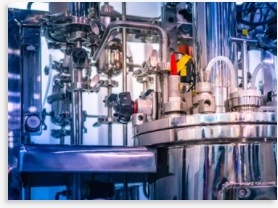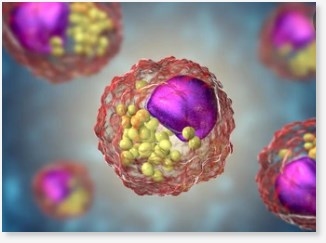Labelled Compounds Custom Development

BOC Sciences has many years of experience in the development of labeled compounds. We provide customized synthesis services for labeled compounds. We have a group of chemists with rich experience in labeling compounds. We are proud to be able to provide 3H, 14C, 32P, 35S and other radiolabeled compounds for preparation and research. The products involved include amino acids, nucleosides, carbohydrates, drugs, agricultural drugs and its intermediates and so on.
Our chemistry team can help you design synthetic routes, select the best radiolabel location, and synthesize and prepare various radiolabeled compounds. Through our efforts, we will promote the continuous development of labeled compound technology, and further promote the development of new drug research, so as to benefit all mankind.
What are Labelled Compounds?
Isotope refers to different nuclides of the same element with the same number of protons but different numbers of neutrons. They are divided into radioactive isotopes and stable isotopes according to whether they are radioactive or not. Stable isotope labeled compounds have similar structures to their corresponding unlabeled compounds, so their physical and chemical properties are also very similar. If the stable isotope labeled substance and the corresponding unlabeled substance are detected using the same chromatographic method, their retention times will be almost the same and cannot be distinguished. Stable isotopes are not radioactive and have no special protection requirements during the synthesis, separation, purification and application of labeled compounds. They can be used as internal standards in clinical medical research, biomedicine, environmental science, food testing and many other fields.

Labeled compounds play an irreplaceable role in the development of new drugs, especially in pharmacokinetics and toxicity studies. As a tracer, the labeled compound can be used as an important basis for studying the distribution, metabolism, efficacy, and mechanism of drug in the body. At the same time, the use of labeled compounds can track the metabolic process of the drug, find out the cause of toxicity, and predict the potential toxicity of the new compound.
Isotope Labeled Compounds
14C Labeled Compounds
Commonly used labeling compounds for 14C are a variety of amino acids, such as leucine, lysine, proline, etc. The most commonly used amino acid is leucine, as this amino acid is widely found in various proteins. There are many positions for 14C labeling, but all can be used when applied to the biological activity determination of mRNA. As for which amino acid to choose, it depends on the properties and ingredients of the protein to be synthesized.
3H Labeled Compounds
Commonly used markers for 3H are amino acids or nucleotides. The purpose of amino acids is the same as that of 14C amino acids. The most commonly used nucleosides among nucleotides, such as uracil and thymine, are used for nucleic acid labeling in bacterial and mammalian cell culture. Among nucleoside triphosphates, a-type NTP and dNTP are the most commonly used. Here N represents the four bases A, G, C, U or T. Markers for nucleic acids, such as nick translation markers. It can also be used for chromosome in situ hybridization or electron microscopy nucleic acid analysis.
35S Labeled Compounds
The most commonly used amino acid labeled with 35S is methionine, which has the same purpose as 14C labelling. The oxygen in the α-phosphate group in [α- 35S]dNTP is replaced with sulfur, and the resulting nucleoside triphosphate can be used for nucleotide sequence analysis and can also be used to label DNA by nick translation.
32P Labeled Compounds
Commonly used markers for 32P are various nucleoside triphosphates. 32P markers are divided into two categories. One type is marked at the γ position and is used for labeling nucleic acids by phosphorylation transfer. The other type is marked at the α position and is used for labeling nucleic acids by nucleotide transfer. For example, [γ-32P]ATP is commonly used to mark the ends of nucleic acids, while various [a-32P]dNTPs are used for nick translation labeling.
125I Labeled Compounds
125I is commonly used in sodium iodide solution, and its main purpose is to label single-stranded nucleic acids such as RNA and other molecules as well as proteins.
Our Labeled Compound Preparation Technology
After years of hard work, the radiolabeled compound preparation platform we have established has the most advanced vacuum system, equipped with radioactive semi-preparative HPLC and other instruments and equipment, which can conduct research on labeling methodology, labeling synthesis routes and the separation and preparation of radioactive products. In addition, we have designed a standardized quality assurance process with dedicated personnel responsible for it. At present, we have completed the synthesis of more than 60 labeled compounds.
- Chemical synthesis: Chemical synthesis is the most commonly used and most basic method to obtain specific labeled compounds with high specific activity of radioisotopes.
- Isotope exchange method: The preparation of isotope-labeled compounds by the substitution of different nuclides of the same element between two different molecules; commonly used in the preparation of tritium markers.
- Biosynthesis: Using complete organisms (plants, microorganisms, oranimals) or specific enzymes of organisms, using simple isotope markers as raw materials, and synthesizing complex isotope labeled compounds through multi-step reactions, It is often used to synthesize labeled compounds with complex structures and difficult to complete chemical synthesis.
In addition to rich synthesis experience, BOC Sciences also has a GMP standard production laboratory, reactors with a variety of specifications and capacities and the most advanced analytical devices (NMR, MS, UV...). Our production laboratory can meet your specific requirements for chemical purity and isotope enrichment, allowing the production, purification and analysis of labeled compounds in quantities from grams to kilograms. When delivering the product to you, we will also provide a comprehensive certificate of analysis.
BOC Sciences will always adhere to technological innovation, continuously improve our chemical labeling technology level, and continue to develop labeling chemicals used in medicine, pharmacy and other fields. We are ready to start working with you at any time to speed up the development of your next labeled compound. If you are interested in our labelled compounds custom development service, please contact us immediately.
Case Study
Pedras et al studied the biosynthetic pathways of cyclonasturlexin, nasturlexins A-D and the corresponding sulfoxides in cress plants using isotopically labeled compounds. With the exception of the carbon atom of the thiomethyl group of nasturlexins, all carbon and nitrogen atoms of nasturlexins were determined to be homophenylalanine. Based on this, the authors present a detailed map of the biosynthetic intermediates between phenethyl isothiocyanate and nasturlexins AD and sulfoxides in land cress, winter cress and watercress.
 Fig. 1. Interrogation of biosynthetic pathways of the cruciferous phytoalexins nasturlexins with isotopically labelled compounds (Organic & Biomolecular Chemistry. 2018, 16(19): 3625-3638).
Fig. 1. Interrogation of biosynthetic pathways of the cruciferous phytoalexins nasturlexins with isotopically labelled compounds (Organic & Biomolecular Chemistry. 2018, 16(19): 3625-3638).
FAQ
1. What are stable isotope labelled compounds?
Stable isotope-labeled compounds are molecules that contain stable isotopes of elements, such as carbon-13, nitrogen-15, or deuterium, in place of more common isotopes. Isotopically labeled compounds are important tools in many research areas, including drug discovery, metabolomics, proteomics, and environmental research. These compounds have a variety of applications, such as tracing metabolic pathways, studying protein interactions, and studying the fate of environmental contaminants.
2. How are isotopically labeled compounds used to study metabolism?
Isotopically labeled compounds can be incorporated into cells or organisms through growth media or diet, allowing researchers to study the metabolism of specific molecules in real time. By analyzing the distribution of isotopically labeled atoms in different metabolites, researchers can gain insights into the pathways and enzymes involved in metabolic processes. Isotopically labeled compounds can also be used in metabolic flux analysis, which involves measuring the rate of metabolic reactions in a cell or organism. By tracking the movement of isotopically labeled atoms through different metabolic pathways, researchers can quantify metabolite flux through these pathways and better understand metabolic regulation and function.
Reference
- Pedras, M.S.C. and To, Q.H. Interrogation of biosynthetic pathways of the cruciferous phytoalexins nasturlexins with isotopically labelled compounds. Organic & Biomolecular Chemistry. 2018, 16(19): 3625-3638.






